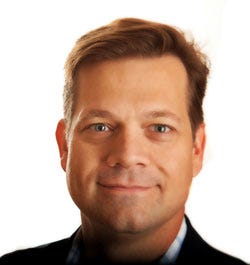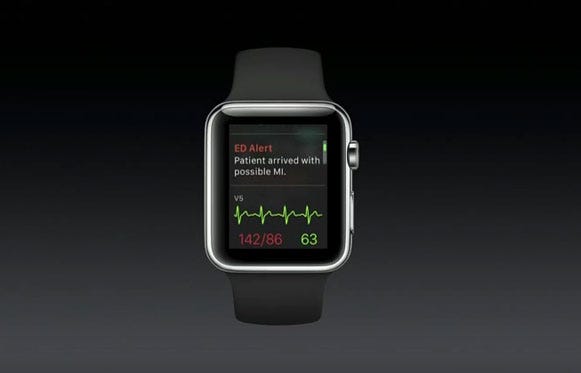Why the IoT Really Will Revolutionize Patient Care
September 10, 2015
It is practically inevitable that the Internet of Things will remake how we care for the sick and elderly, although uncertainty around HIPAA may delay that promise.
Brian Buntz
Last year, The Guardian declared that the "'Internet of things' is the most over-hyped technology." While any promising new technology attracts its fair share of hype, the aging Baby Boomer generation is poised to embrace IoT-powered technologies to help them maintain independence as they age and the global population become ever-more burdened with chronic diseases.
|
Morgan Reed, the App Association's executive director, has testified in front of Congress about healthcare connectivity. |
"The reality of the situation, which is coming at us rapidly, is the aging population. The United States literally does not have enough facilities to care for the aging Baby Boomers," says Morgan Reed, executive director of the App Association based in Washington, D.C. "But more importantly, when you look at the possibility that your mom or your dad gets to live at home for three extra years, or you have to put them in an assisted living facility at a price tag of $12,000 per month, you start looking for technology options that let them live with dignity."
Preparing for the IoT in Healthcare
Reed asks us to imagine that, in the not too distant future, you could buy a smartwatch loaded with a variety of health sensors. "One of those could be a glucose monitor, another could be blood pressure, and another could track biomarkers to gauge medication adherence. And of course it can track your geo location, and it allows for geofencing," he says. "Now all of the sudden, your mom can discreetly take care of what is going on in her life as can her care team. If she is diabetic, you can get an alert when she misses her insulin."
For patients dealing with Alzheimer's or dementia, geofencing could prove to be a powerful tool. "You could get an alert that says: your mom is 25 miles away. You can call her up to check on her," Reed envisions.
Most importantly is the retention of independence that a personal emergency response system would provide for the elderly. Some reports suggest that the elderly fear losing their independence more than they do death.
Such systems could also help monitor when elder patients fall. "Remember the whole: 'I've fallen and I can't get up' ad from the 1990s?" Reed asks.
In the future, personal emergency response systems (PERS) will do much more than send an alert when a user presses a button and report they've fallen. "Imagine if a smartwatch can monitor not only if someone fell but also how they are doing and send automatic alerts to that person's care team," Reed says.
"This is going to be the revolutionary transition to home healthcare that is not just about monitoring a chronic disease state, but about helping prevent them from getting to that state," Reed says. "You do that by engaging them early, giving them control and dignity, but also by keeping track of the data in a much more real time and longitudinal way than a visit to the physician every six months."
Furthermore, the scope of information that is gathered by such devices and who receives it could be programmed by patients and their doctors.
"In a nutshell, it's about how you help those patients live as long as possible at home with dignity and give them control over their life. Some assisted living centers are really nice, but it is a real corner-turner for a lot of people. Most of the time, the longer the elderly can live alone, the better off they seem to be--both emotionally and physically."
|
Shown here is a AirStrip Technologies' patient monitoring system for the Apple Watch, which enables doctors to track patients in near real time. AirStrip is a member of the App Association. |
Overcoming Regulatory Uncertainty
The biggest delay for unleashing the potential of the Internet of Things is not so much technological but policy-driven. One of the core challenges that the App Association has heard from its members working in healthcare is that the guidance documents around HIPAA are so out of date that it is stalling out or slowing venture capital funds for those projects. "When you walk into a room of venture capitalists with an idea for a cool new IoT health monitor and they ask: 'what are your barriers to entry?' it's usually not good to reply with: 'I don't know.'" Reed says. "You often don't get the check when you say: 'I have no idea.'"
This is one of the reasons why the App Association is pushing for more regulatory clarity on the issue. Certain forms of technology in the medical field often are often outdated. "Broadly, the problem on the new technology adoption, is that hospitals are quick to embrace new technology for things like scalpels and new radiology equipment but slow to adopt new technology linked to the overhead of running a successful practice," Reed says.
Consider the case of pagers, for instance, which have all but become extinct in the consumer field, but are still used by many doctors. "The problem for hospitals around things like HIPAA and the uncertainty of a smartphone apps potentially being considered a medical device by the FDA has made many hospitals loath to change their system to a bring-your-own-device model or an iDevice system," Reed says. "They worry whether they will be liable for the data if it, say, inadvertently leaks out from an iPhone or if they might be at risk for a fine for a HIPAA violation."
There is hope, however. Earlier this year, HHS pledged to work to clarify how HIPAA regulations apply to mobile devices, which would likely help foster the development of innovative health-tracking devices.
Learn more about cutting-edge medical devices at MD&M Philadelphia, October 7-8, 2015. |
Brian Buntz is the editor-in-chief of MPMN and Qmed. Follow him on Twitter at @brian_buntz.
Like what you're reading? Subscribe to our daily e-newsletter.
About the Author(s)
You May Also Like



.png?width=300&auto=webp&quality=80&disable=upscale)
